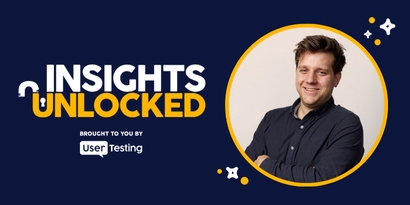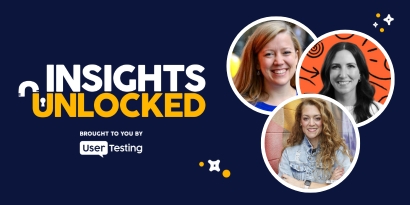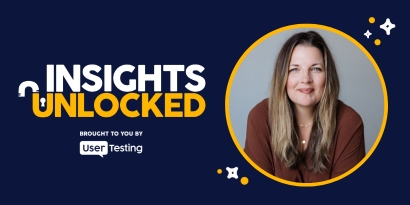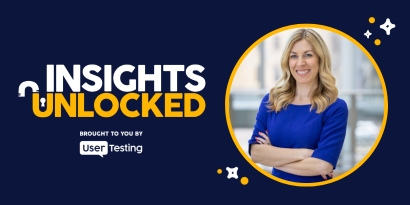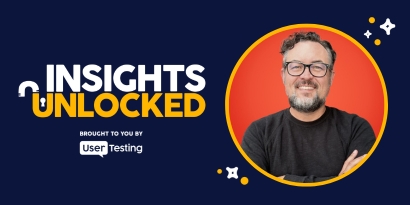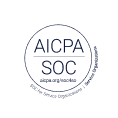
Episode 16 | May 17, 2021
The future of digital collaboration and remote work
Discover how digital collaboration is transforming remote work. Learn expert insights on teamwork, innovation, and the future of hybrid workplaces with MURAL.
Reinventing how we work: the future of digital collaboration and remote work transformation
"Why are we returning to the office?" That’s the bold question posed by Mariano Suarez-Battan, CEO of MURAL, in this Insights Unlocked episode.
As organizations navigate a post-pandemic world, digital collaboration and remote work transformation have taken center stage. The shift isn’t just about where we work—it’s about how we work.
In this insightful roundtable discussion, leaders from MURAL and UserTesting explore how businesses can thrive in a distributed environment by leveraging technology, fostering creativity, and rethinking workplace rituals.
The rise of digital collaboration: Work is not a place
The past few years have proven that work is no longer confined to a physical office. As Jim Kalbach, Chief Evangelist at MURAL, puts it, "Work is not a place. It’s what we accomplish together." This mindset has led organizations to reimagine workflows, team engagement, and productivity in a hybrid and remote-first world.

Suarez-Battan shares how MURAL has adapted to this new paradigm:
“We hired like 400 people last year, remotely. And we are team-building remotely. It’s not ‘natural’ in the way we used to think about it, but it’s absolutely possible if you design it right.”
One of the key insights from the discussion is that remote work isn’t just about replicating in-person experiences online—it’s about intentionally designing new ways to collaborate. From digital whiteboards to structured rituals that replace spontaneous office interactions, the most successful companies are the ones that actively cultivate connection and creativity in distributed teams.
Rethinking meetings: From video fatigue to purposeful connection
One of the biggest challenges in remote work transformation is meeting overload. Many companies initially translated their traditional in-office meeting culture into endless Zoom calls—leading to frustration, fatigue, and inefficiency. But as Suarez-Battan points out, companies are now getting smarter about designing their time:
"People started shrinking their meetings, realizing, ‘Do we really need a video conference to solve this problem?’ Now, they’re getting more savvy about workflows, structured collaboration, and designing their time better."
Instead of defaulting to lengthy meetings, forward-thinking teams are integrating asynchronous collaboration tools, documenting key discussions, and using short, well-designed check-ins to maintain alignment. Kalbach highlights an example of how his team leverages structured rituals:
“We have one called ‘Pick Your Nick,’ where everyone shares how they’re feeling based on a Nicolas Cage character. It takes about three minutes, everyone laughs, and we have better conversations.”
These small but powerful rituals help recreate the informal, human moments that are often lost in remote work environments. When teams invest in purposeful connection, meetings become more engaging, and employees feel a stronger sense of belonging.
Digital transformation: The urgency to innovate
The pandemic didn’t introduce digital transformation—but it accelerated it. As Janelle Estes, Chief Insights Officer at UserTesting, explains, companies no longer have an excuse to delay digital innovation:
“Overnight, we saw a huge shift. No more in-person coffee shop interviews, formal labs, or home visits. Teams had to move to remote research and digital collaboration.”
This shift has made it easier than ever for companies to gather insights from customers and employees, refine their processes, and iterate rapidly. Andy MacMillan, CEO of UserTesting, notes that the pressure to innovate has removed traditional barriers to change:
“The pandemic forced businesses to rethink their strategies at an unprecedented pace. It wasn’t ‘let’s have an offsite next month and discuss our digital strategy.’ It was ‘we need to figure this out today.’”
Companies that embrace this new pace of innovation—by leveraging user feedback, adopting agile workflows, and investing in digital-first collaboration—are the ones poised for long-term success.
Inclusion, accessibility, and the future of work
One of the most exciting aspects of digital collaboration is its potential to make workplaces more inclusive. Remote work transformation allows companies to hire talent from diverse backgrounds, and digital tools enable broader participation in decision-making. However, Kalbach cautions that inclusion requires intentionality:
“Just because you have the ability to invite everyone into a conversation doesn’t mean you’re doing it effectively. The key is to design collaboration in a way that ensures all voices are heard.”
Suarez-Battan takes this a step further, advocating for new roles within organizations:
"I wish more companies had a Chief Meetings Officer or a Chief Time Officer—someone dedicated to designing better collaboration and ensuring that diverse perspectives are included."
This emphasis on structured inclusion extends beyond internal teams. MacMillan points out that companies must also be deliberate about including diverse customer perspectives:
“We were talking to a customer who made a distinct effort to hear voices from people with different backgrounds than the team designing their product. That’s the kind of intentional inclusion that leads to better innovation.”
The workplace of the future: A hybrid and human-first approach
So, what does the future of work look like? It’s hybrid, flexible, and digitally powered. But most importantly, it’s human-first. As businesses navigate this evolution, they must go beyond simply adapting to remote work—they need to proactively design a better way to work.
As the conversation wraps up, Suarez-Battan leaves us with an inspiring reminder:
“Let’s play more together. Let’s make work fun. If we take ourselves too seriously, it’s going to be really hard to collaborate, adapt, and innovate.”
The companies that embrace digital collaboration, rethink outdated structures, and foster meaningful human connections will be the ones that thrive in the future of work. Are you ready to reinvent how your team works?


